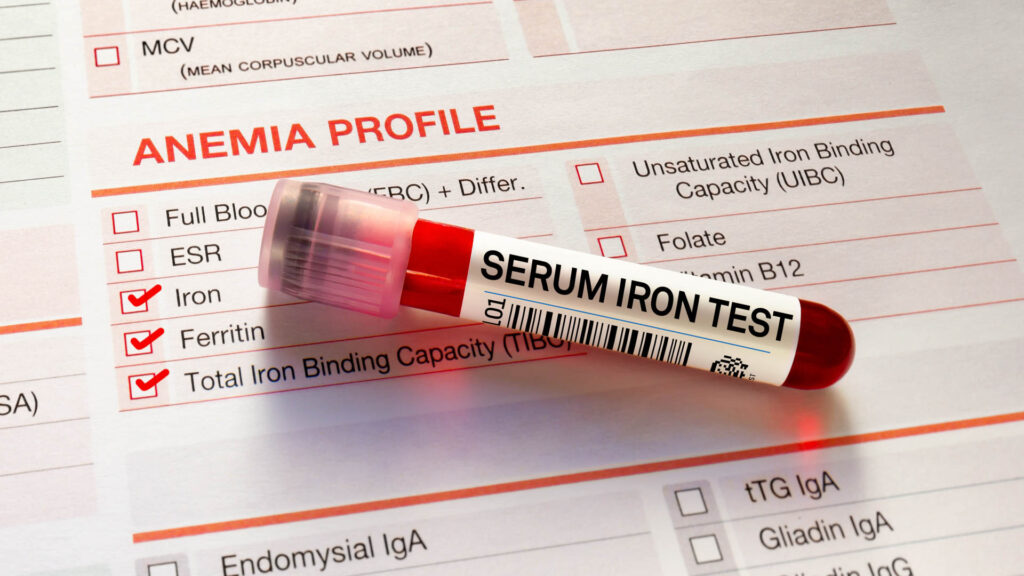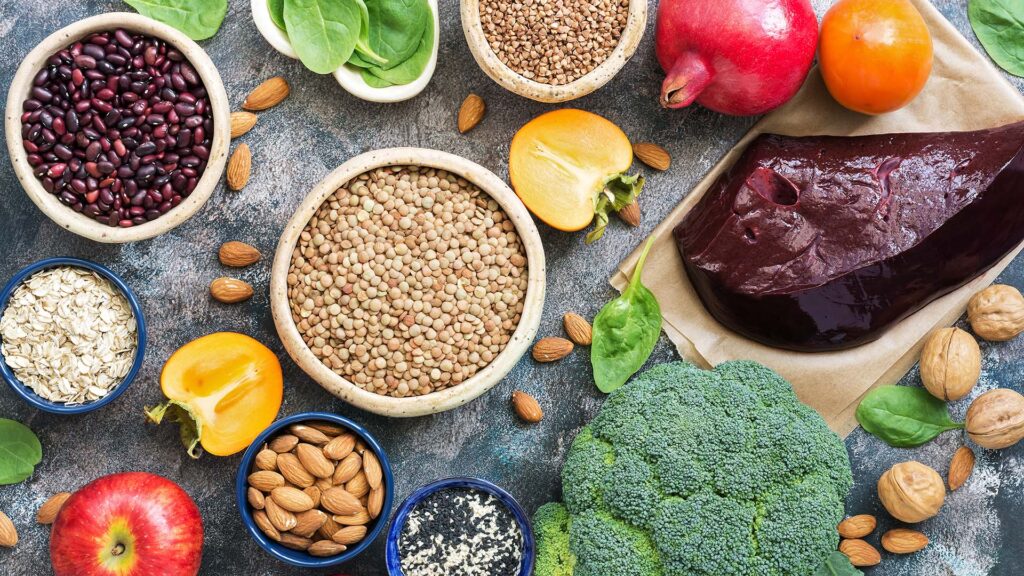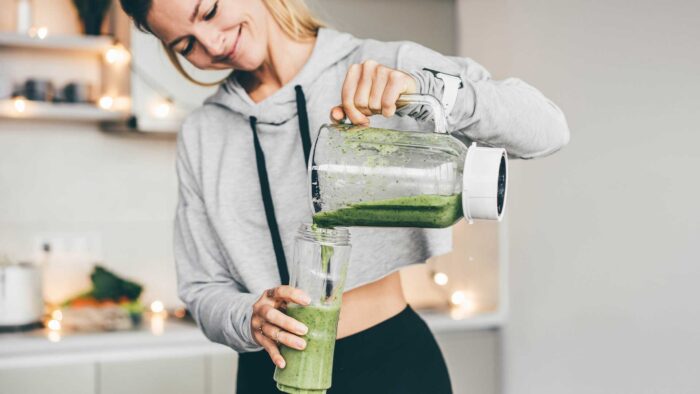Unpacking iron deficiency: learn about the causes, symptoms and treatment
- READING TIME 7 MIN
- PUBLISHED November 02, 2023
- AUTHOR Donna
Key takeaways
- Iron is a mineral that fuels our muscles, helps generate energy and facilitates cognitive functions. Yet, a deficiency can occur if our body lacks sufficient iron levels or struggles to absorb it effectively.
- Common symptoms of iron deficiency include fatigue, paleness and shortness of breath, as well as poor concentration and memory loss. Physical exams and specific blood tests can help identify iron deficiency and its extent.
- Treating iron deficiency involves replenishing the body’s iron stores, typically through supplements or dietary changes, while simultaneously addressing any underlying conditions.
Unpacking iron deficiency: learn about the causes, symptoms and treatment
Iron is an unsung hero among minerals. Often overlooked, but a critical nutrient that helps keep us healthy and strong, fuelling our muscles and fortifying our body’s ability to generate energy.

One of its prime roles, specifically, is helping produce myoglobin, a protein found in muscle cells. Myoglobin captures oxygen from haemoglobin, the iron-rich protein in our red blood cells, and squirrels it away in muscle cells. 1 Iron is also vital for cognitive functions like memory, attention and learning as it supports the synthesis of neurotransmitters such as dopamine, noradrenalin and serotonin. 2
Unravelling iron deficiency
About two-thirds of our body’s iron is housed in haemoglobin, a protein in red blood cells. Haemoglobin delivers oxygen from the lungs to all parts of the body. However, when our body lacks sufficient iron, it struggles to produce enough red blood cells, leading to iron deficiency anaemia. 3
This issue particularly threatens children, pregnant women+ and vegetarians, and is a prevalent health concern in developing countries. The World Health Organization warns that an alarming 37 percent of pregnant women+ and 40 percent of children under five years are anaemic. 4
Sometimes, however, the amount of iron we consume isn’t the issue, but rather the inability to absorb the mineral. On average, our body absorbs about 10–20 percent of iron from a typical Western diet 5 , but this figure can also be much lower for those with poor iron absorption. This is often a result of an underlying gastrointestinal condition like coeliac disease or inflammatory bowel disease. Certain nutrients, including calcium or polyphenol, can also hamper iron absorption if we consume them together. 6
Our iron stores primarily reside in haemoglobin, meaning that excessive bleeding could potentially drain our iron reserves. Substantial blood loss, perhaps through heavy menstrual bleeding, gastrointestinal issues or haemorrhoids, could, in severe cases, trigger a deficiency.
Detecting iron deficiency
Iron deficiency often creeps up slowly and can initially be so subtle that it flies under the radar. Many people with iron deficiency anaemia may not exhibit any symptoms at all, with signs only surfacing as the condition progresses. Some of the most common symptoms include: 7 8 9
- Fatigue and weakness: Iron plays a vital role in energy production. If the amount of iron decreases, the body cannot produce enough haemoglobin to adequately supply your muscles and tissues with oxygen. As a result, you may feel tired and weak.
- Paleness: Haemoglobin gives the skin its rosy colour. Low levels, on the other hand, turn it pale, most noticeably on the face, gums and inside of the lips.
- Shortness of breath: With less haemoglobin available to carry oxygen to the muscles and tissues, you may find yourself feeling out of breath after doing activities that you could do easily before.
- Heart palpitations: In cases of iron deficiency, the heart has to work harder to transport oxygen around the body, which can lead to irregular or fast heartbeat and even chest pain.

Iron deficiency can also manifest in less obvious ways, such as dry and damaged skin, frequent infections, poor concentration, restless legs syndrome, and sometimes, cravings for non-food items like dirt.
Pinpointing iron deficiency
A thorough medical history review can help discover the root cause of iron deficiency. Your doctor will ask about symptoms, diet, family history of anaemia or iron deficiency and medication use because certain drugs can interfere with iron absorption or cause bleeding. Women+ may be asked about their menstrual cycle details.
After the examination, your healthcare provider may check for physical signs of iron deficiency, like pale skin, a rapid heartbeat or a swollen tongue.
Furthermore, blood tests are effective tools to discover iron deficiency and its extent. A common one is the complete blood count test, which provides details about various cells in your blood. In iron deficiency, red blood cells often appear small and pale. 10

Additional tests like the ferritin test might measure the amount of stored iron, while the transferrin test is used to assess how effectively your body transports the mineral. In some cases, further tests could be necessary to identify the cause of the iron deficiency.
Addressing iron deficiency: supplements and diet are the key
When it comes to iron deficiency, the key treatment strategy typically aims to replenish the body’s iron stores while tackling the root cause. Oral iron supplements, especially ferrous salts, are the usual go-to as they provide a generous dose of elemental iron.
For maximum absorption, it’s best to take these supplements on an empty stomach, though you can pair them with food to mitigate side effects like stomach upset. For severe deficiency or when oral supplements don’t work, iron can also be administered intravenously or through muscle injections. 11
Elevating your dietary iron intake is another key component of addressing iron deficiency. Iron-rich foods include meat, poultry, seafood, legumes and leafy green vegetables. Though plant sources of iron are less efficiently absorbed, they can still bolster iron intake, especially when used with vitamin C-rich foods like citrus fruits, strawberries or bell peppers, which enhance iron absorption. 12

It’s worth noting that certain foods and substances can be counterproductive and can thwart iron absorption. These foods include calcium-rich foods 13 , foods teeming with oxalates like rhubarb, and foods and drinks that contain tannins like tea and coffee. To maximise iron absorption, it’s wise to consume these separately from your iron-rich meals.
Addressing root causes
If iron deficiency stems from an underlying condition like coeliac disease or heavy menstrual bleeding, managing this condition becomes a key path towards handling iron deficiency. This could involve medication, surgery or, in severe cases, even a blood transfusion to rapidly bolster the body’s iron levels and red blood cell count.
Researchers are also coming up with new ways to prevent and treat iron deficiency. For example, we’re learning more about how our genes can influence our bodies’ use of iron. In fact, around 1–2 percent of people of European descent are carriers of a mutation which increases the risk of iron deficiency anaemia, according to a 2008 study published in Nature Genetics. 14 In the future, we might be able to create personalized diets based on a person’s unique genetic makeup, which could help prevent iron deficiency.
Researchers are exploring new and more effective ways how to add iron to everyday foods like cereals without affecting taste or colour. Moreover, there are also studies into the effectiveness of providing cooking pots made from iron as a simple and cost-effective way to increase iron intake in developing countries.
Since iron is a crucial component of our health, it’s essential to keep an eye on the subtle signs of deficiency. This includes understanding what affects your iron reserves and how to keep them at an optimal level. Find out more about the iron-rich diet in our dedicated article, as well as how to select the best iron supplements.
REFERENCES
- https://www.ucsfhealth.org/education/hemoglobin-and-functions-of-iron
- https://www.frontiersin.org/articles/10.3389/fnagi.2013.00034/full
- https://www.nhlbi.nih.gov/health/anemia/iron-deficiency-anemia
- https://www.who.int/health-topics/anaemia#tab=tab_1
- https://www.betterhealth.vic.gov.au/health/conditionsandtreatments/iron#how-much-iron-do-we-absorb-from-our-diet
- https://www.ncbi.nlm.nih.gov/pmc/articles/PMC9219084/
- https://www.mayoclinic.org/diseases-conditions/iron-deficiency-anemia/symptoms-causes/syc-20355034
- https://my.clevelandclinic.org/health/diseases/22824-iron-deficiency-anemia
- https://www.nhs.uk/conditions/iron-deficiency-anaemia/
- https://www.msdmanuals.com/home/blood-disorders/anemia/iron-deficiency-anemia
- https://my.clevelandclinic.org/health/drugs/14568-iron-oral-supplements-for-anemia
- https://www.redcrossblood.org/donate-blood/blood-donation-process/before-during-after/iron-blood-donation/iron-rich-foods.html
- https://www.ncbi.nlm.nih.gov/books/NBK448204/
- https://www.nature.com/articles/ng.456
RELATED ARTICLES
Explore more
Feed your curiosity with more content. Dive deeper and explore our selected articles, curated just for you.




